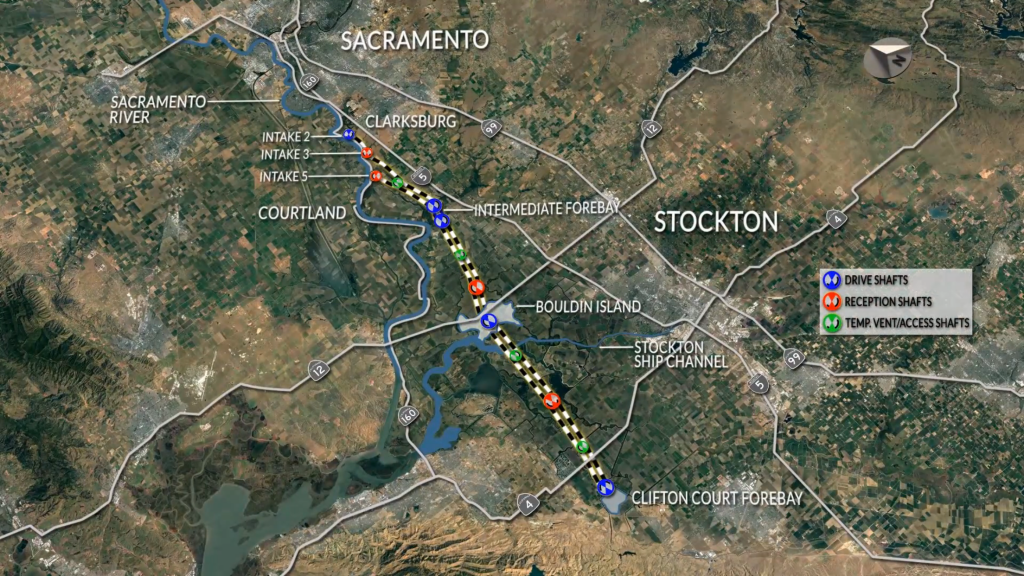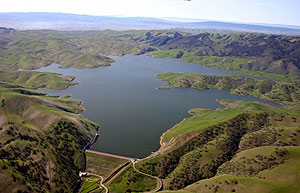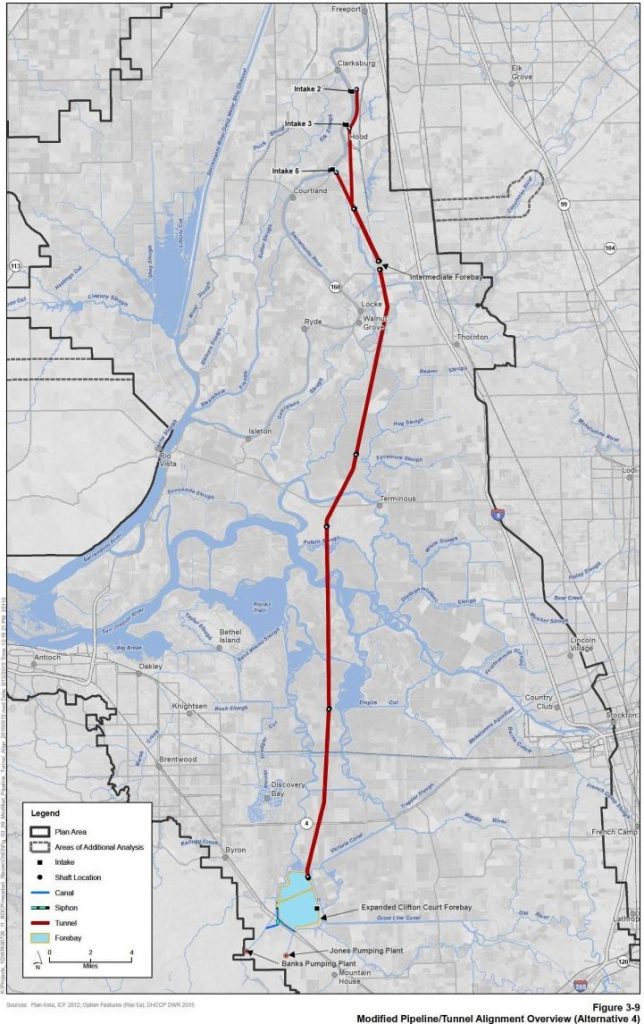
Map of current and proposed pipelines for the Brackish Water Desalination Project.
City seeks state grant and loan
By Allen Payton
At their December 12, 2017 meeting the Antioch City Council heard a report about their efforts to build a brackish water desalination plant and obtain the estimated $60 million in funding needed. They also heard about the strong water rights the city has, how the plant will help attract businesses to town and the opportunity to be in the water resale business, to provide long-term funding for operations. See the complete staff report on the agenda item, here: Brackish Water Desal Project ACC Mtg Agenda 121217-2
Project consultant Walter Bishop, the former General Manager of the Contra Costa Water District, provided the background on the plant and efforts to get it funded.
“We have hopes Antioch will be on the state funding list, which is expected to be announced this month,” he said.
“Antioch has one of the strongest, historic water rights in the California Delta,” Bishop continued. “The state has granted twice the amount of water rights than it has water. You have real water. It’s not called paper water. Yours has been adjudicated. Your two sources of water are your particular water right and the Contra Costa Water District’s canal water.”
“The estimated value…is between $70 and 100 million. Your ability for you to exercise your water rights…saves the customers of this city about $4 million per year,” he stated. “The more reliable your supply is the more ability to attract economic activity.”
It’s not going to be a desalination plant, because “Desalination is associated with ocean water. This is brackish water. It’s fifty-time less saline than ocean water. It’s one-third the cost of ocean desalination.”
“Treating Contra Costa Water District water is $1,000/acre feet,” Bishop explained. The estimated cost of treating “brackish water is $920/acre feet.”
It takes treating 7.5 million gallons of brackish water to produce 6.0 million gallons of useable water, he shared.
“The city has to build a new intake and state-of-the-art fish screens,” said Bishop. “There is land at the city’s water treatment plant for a new facility. Plus, Antioch owns 50% capacity rights of the water recycling at the Delta Diablo Sanitation Plant. The plan is to run a new water pipeline from the city’s water plant off Putnam over to Delta Diablo on West 10th Street.”
“With the new pump the city will have a variable speed pump which will be better for the city’s needs,” he added.
“It will help with industrial and other businesses looking to locate here,” Bishop stated. “There is a potential of regional partners with the flexibility to expand the facility. The cost is estimated at $60 million.”
According to the city staff report on the agenda item, so far, the city has received a $1 million loan the “Drinking Water State Revolving Loan program for planning and preliminary design activities.” The city has also applied for a $10 million state grant. In addition, city “staff has met with SWCRB (State Water Resources Control Board) staff and has confirmed the project is eligible for low interest financing up to $50,000,000.”
Final design and permitting for the plant is expected to be completed in 2018 and the project could be online in late 2019 or early 2020, depending on securing funding.
Councilman Tony Tiscareno was first to make a comment about the project report.
“We know that water is the new hot commodity. It can be very expensive,” he said. “I’m getting very excited about this. I thought it was more of a pipe dream than a reality. But it’s turning out to be more of a reality…to protect our water rights. I’ve always been supportive of this. I hope the loan interest rate is something we can do. This is all good stuff.”
Mayor Sean Wright, who represents the city on the Delta Diablo sanitation district board said, “As far as Delta Diablo goes, they were questioning if they had the capacity for all the brine. One of the facilities we plan to build is a holding tank…to time discharges.”
The EIR (Environmental Impact Report) coming forward is for the 6-million-gallon desalination plant. Will a 16-million-gallon desalination plant fit on the site we’re looking at?” he asked.
“Absolutely,” Bishop responded.
Wright then asked, “The $50 million shortfall, your confident we can get a low-interest loan from the state?”
“We’d prefer grants,” Bishop replied. “For every $10 million in free money your costs come down $100.”
“We could be looking at the summer of next year for the funding?” Wright asked.
“You’re correct,” Bishop said.
“How are our relationships with the Contra Costa Water District?” asked the mayor.
“I think our relationships over there are fine. I used to be the GM over there,” Bishop shared. “We’re kind of suing the state,” he said referring to the city’s lawsuit over the proposed Delta tunnels “Contra Costa Water is responsible…Your staff was very careful to not name both parties,” meaning CCWD and the state.
Wright then asked, “Is there any potential for revenue generation? If we did a 3P (public private partnership) [will there be] any general fund revenue for the city?”
Bishop shared how “Gary Darling, when he was at Delta Diablo he had a vision of an ultrapure plant. If somebody, a high-tech company…they need ultrapure water, you’re providing the foundation for that. Second, during a drought, when costs go up 25% plus a surcharge, you’ll have the opportunity to have water that other people can use. The price of water during a drought is what the seller sets it at.”
Mayor Pro Tem Lamar Thorpe asked how the city can sell the water to create a revenue source for the city.
“Your water rights allow you to divert 16 million gallons of water a day,” Bishop responded.
The council then voted unanimously to receive and file the report.

























